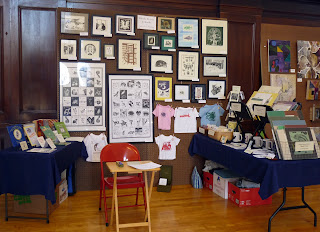As I've mentioned before, our family has a holiday tradition of supporting Heifer International by buying animals for all our relatives. Of course the Heifer Project animals are all the sorts that can be used to improve people's lives by providing food, income, labor, and so on. But I thought it made as good an excuse as any to give this month's Words of the Month an animal theme. So here are some animals whose names in English have interesting stories.
otter - A water-creature, the otter's name goes all the way back to Old English, and comes from the same root as our word water. You can also see (or perhaps you can better hear) the relationship with the Greek hydra.
bear - Literally meaning "brown one," this is a textbook illustration of a linguistic taboo at work. Because hunters would not speak the names of certain animals (notably bears and wolves), the words for those beasts died out of their languages, replaced by euphemisms. Most of the northern European languages have words for bear that were originally euphemistic, such as the Russian medved "honey-eater." Apparently in rural areas of Finland it's still taboo to refer to bears directly.
ostrich - from Old French, from Latin, from Greek, ostrich meant "big sparrow"!
squirrel - The word ultimately derives from Greek skia "shadow" + oura "tail", thus a creature that can shade itself with its tail, an idea that pleases me greatly. But before English acquired that name from French in the early fourteenth century, the Old English word for the critter was acweorna, which is related to acquire. So the squirrel was the animal that acquires nuts.
kangaroo - You may have heard the story that when Captain Cook asked the natives in Australia what they called the jumping beast, they replied "I don't understand you," which phrase in their language Cook took to be the name of the creature. This is a marvelous story and I'm very sorry to say that it's false. The only misunderstanding was that the word gangurru in the Guugu Yimithirr language referred only to that specific species, while English has adopted it to apply to an entire group of species.
caterpillar - ultimately from Latin roots meaning "hairy cat."
turkey - We call this bird a turkey because it comes from Turkey. Of course it doesn't, being a New World bird, but both African guinea fowl and later American turkeys were distributed through Europe primarily by way of North Africa and Turkey, and the two kinds of fowl were considered related, and shared the name of their perceived point of origin. Funnily enough, however, the Turkish word for turkey is hindi "Indian," for the same reason the native people of the New World were called Indians. The Hindi word for turkey is nasamajha. I wish I knew the etymology of that!
heifer - I thought I really ought to include heifer as one of my words, seeing as it's my whole excuse for the theme, and all… But the only interesting thing about the etymology of heifer is that, in a way, there's nothing to say about it. That is, it's one of those handful of words that dates back to Old English, but seems to have no relatives in any other languages, so its ultimate origins are a mystery. Its original sense is a mystery, too. Theories include that its roots meant "high-stepper," that it came from words for "large bull," and that it originally meant "enclosure dweller." But in any case, consider giving one this holiday season to help make the world a better place! You can find information about Heifer International here.
[Pictures: Bear, wood block print with watercolor by Betsy Bowen, from Antler, Bear, Canoe: A Northwoods Alphabet, 1991;
Squirrels, multi-block color woodcut by Norbertine von Bresslern-Roth, c1925 (image from Josef Lebovic Gallery);
Cow, linoleum block print by Sharon Lorenz (image from her Etsy shop LorenzKraft).]



































